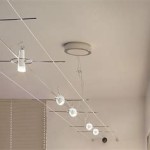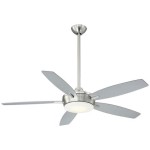Essential Aspects of Ceiling Light Requirements
The appropriate choice of ceiling lights is crucial to the overall ambiance and functionality of any room. Considering the various factors involved in determining ceiling light requirements ensures optimal illumination and visual comfort. This article delves into the fundamental aspects to consider when selecting and installing ceiling lights.
1. Room Size: The size of the room plays a pivotal role in determining the number and wattage of ceiling lights required. Larger spaces demand more powerful light sources to provide adequate illumination, while smaller areas may suffice with fewer, lower-wattage fixtures.
2. Ceiling Height: The distance between the ceiling and the floor influences the spread and intensity of light. High ceilings require brighter and more diffused light to reach lower areas effectively, whereas lower ceilings can accommodate lower-wattage fixtures with a more concentrated beam.
3. Room Shape: Irregularly shaped rooms may require additional lighting to ensure even illumination throughout the space. Recessed or track lighting can be strategically positioned to address specific areas that may receive insufficient light from traditional ceiling fixtures.
4. Purpose of the Room: The intended use of a room influences the type and intensity of light required. Task-oriented areas, such as kitchens and study rooms, necessitate brighter, more focused lighting, while living rooms and bedrooms benefit from softer, ambient illumination.
5. Window Placement: The presence and location of windows affect natural light levels and should be considered when planning ceiling light requirements. Rooms with ample natural light during the day may require less artificial illumination, while spaces with limited or no access to natural light demand more powerful lighting.
6. Color Temperature: The color temperature of ceiling lights, measured in Kelvins (K), impacts the ambiance of the room. Warm white light (2700K-3000K) creates a cozy and inviting atmosphere, while cool white light (4000K-5000K) promotes alertness and concentration.
7. Style and Aesthetics: The aesthetic preferences of the homeowner should be taken into account when selecting ceiling lights. Fixtures are available in a wide range of styles, from traditional chandeliers to modern LED panels, each contributing to the overall design and decor of the space.
Conclusion: By carefully considering the essential aspects outlined above, homeowners can ensure that their ceiling lights meet both functional and aesthetic requirements. Proper lighting enhances comfort, productivity, and the overall ambiance of any room, creating a harmonious and inviting space.

Ergonomic Lighting Requirements Workplace Modular Systems

Modern Office Lighting Requirements In 2024 Wipro Lights

Guide To Kitchen Lights Lighting Requirements

Lighting The Way A Guide To Exit Signs Emergency Requireme Revolve Led

Cost To Install Recessed Ceiling Lights In 2024 Forbes Home

How To Calculate Lighting Needs

10w 5 Flush Mount Round Ceiling Light By Bulbrite Marvel Lighting

Dinglilighting Matte Black Ceiling Fan With Remote Control Indoor And Outdoor Smart Flush Mount Light Kit For Yard Bedroom Living Room Kitchen 3 Sds Adjustable Timing Com

2 In 1 Vintage Ceiling Fan Light Farmhouse Cage Chandelier Pedant Lamp W Remote Control For Restaurant Gallery Hotel Com

Lucera 3 Light Kitchen Island Chandelier Linea Lighting Modern And Affordable Residential
Related Posts








